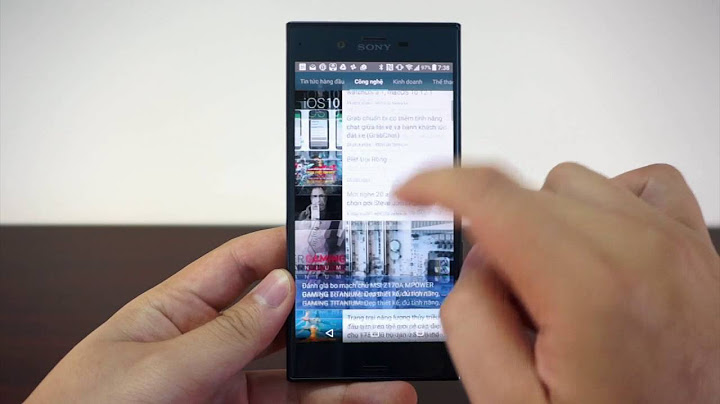Following is a in-depth review of the Nikon D5100 vs Sony A6000, former is a Entry-Level DSLR while the other is a Advanced Mirrorless by manufacturers Nikon and Sony. There is a large difference between the sensor resolutions of the D5100 (16MP) and A6000 (24MP) but both cameras provide the identical sensor dimensions (APS-C). Show  The D5100 was unveiled 4 years prior to the A6000 which is quite a serious difference as far as tech is concerned. Both cameras feature different body design with the Nikon D5100 being a Compact SLR camera and the Sony A6000 being a Rangefinder-style mirrorless camera. Before going right into a in depth comparison, here is a simple introduction of how the D5100 scores against the A6000 when it comes to portability, imaging, features and an overall score.  Nikon D5100 vs Sony A6000 GalleryThis is a sample of the gallery pics for Nikon D5100 & Sony Alpha a6000. The full galleries are viewable at & . Reasons to pick Nikon D5100 over the Sony A6000D5100 A6000 Display typeFully Articulated   Reasons to pick Sony A6000 over the Nikon D5100A6000 D5100 RevealedApril 2014   Common features in the Nikon D5100 and Sony A6000D5100 A6000 Manual focus    Nikon D5100 vs Sony A6000 Physical ComparisonIf you're looking to carry around your camera, you need to factor in its weight and size. The Nikon D5100 comes with exterior measurements of 128mm x 97mm x 79mm (5.0" x 3.8" x 3.1") along with a weight of 560 grams (1.23 lbs) while the Sony A6000 has specifications of 120mm x 67mm x 45mm (4.7" x 2.6" x 1.8") accompanied by a weight of 344 grams (0.76 lbs). Take a look at the Nikon D5100 vs Sony A6000 in our brand new Camera & Lens Size Comparison Tool.  Take into account, the weight of an ILC will differ depending on the lens you are utilizing at that moment. The following is a front view over all size comparison of the D5100 and the A6000.  Factoring in size and weight, the portability rating of the D5100 and A6000 is 66 and 85 respectively.  Nikon D5100 vs Sony A6000 Sensor ComparisonOften, it can be difficult to visualise the contrast between sensor sizes purely by looking at technical specs. The picture underneath will offer you a far better sense of the sensor measurements in the D5100 and A6000. As you can tell, each of the cameras feature the identical sensor size but not the same MP. You can expect to see the Sony A6000 to give greater detail having an extra 8 Megapixels. Greater resolution will also let you crop images way more aggressively. The more aged D5100 is going to be behind in sensor innovation. The device is protected with extra seals to prevent failures caused by dust, raindrops, and water splashes. A higher screen resolution provides a sharper image, making it easier to review your photos. EVF resolution ∅ Nikon D5100: Not applicable Unknown. Help us by suggesting a value. (Sony Alpha A6300) An electronic viewfinder (EVF) with a higher resolution provides a sharper image, producing a view comparable in quality with the one displayed on an optical viewfinder. The focus motor moves the lens in order to autofocus. For system cameras, having a focus motor in the camera's body allows you to use a wide range of lenses, including lenses which do not have their own focus motor. For compact cameras, a focus motor is usually built-in. Flip-out screens can be useful for tricky shots. With 100% coverage, you can compose the image correctly when you capture the photo. With less than full coverage, you may have to crop your photos afterward to get them looking perfect. The size of the screen (measured diagonally). OpticsOne of the most important aspects of a camera is the size of its sensor. A larger sensor will capture more light, which results in improved low-light performance, dynamic range, and general image quality. The more focus points the more flexibility in picking which part of the scene to focus on. They also give the image sensor a better probability in identifying the right area of the scene to focus on in more automatic modes. The number of megapixels determines the resolution of the images captured with the main camera. A higher megapixel count means that the camera is capable of capturing more details. However, the megapixel count is not the only important element determining the quality of an image. With a higher light sensitivity (ISO level), the sensor absorbs more light. This can be used to capture moving objects using a fast shutter speed, or to take images in low light without using a flash. Expanded ISO allows you to go beyond the native ISO. It does this by digitally enhancing the image output. The resulting image will have less quality than when staying within the native ISO range, but it can be useful in certain situations. With sensor shift, the image sensor (rather than the lens) moves to counterbalance any vibration of the camera. This means the image will be stabilised regardless of what lens is being used. Fast continuous shooting is useful for catching action shots. With AF tracking, once you choose the subject and press the shutter release part way down, as the subject moves, the autofocus will follow it. No more out of focus shots. VideographyThe maximum resolution available for videos shot with the main camera. Although it may be possible to choose among other frame rates, those recordings usually have lower resolutions. A phase-detection autofocus system is faster than a contrast detection autofocus system. Even when recording scenes with a lot of fast movements, the videos are sharp and clear. When recording movies they stay focussed and sharp. A microphone port allows connecting external high-end or specialized microphones. With a standard mini jack socket, you can use the device with most headphones. A stereo microphone allows to record audio files or movies in stereo without an external microphone. A timelapse shows a long passage of time sped up. A series of photographs taken from the same position over a long period is joined together to create a short video. It is great way to capture things like the setting sun, or clouds moving across the sky. movie bitrate Unknown. Help us by suggesting a value. (Nikon D5100) The higher the movie recording bitrate the better the movie quality with more and crispier details and less compression artifacts. More microphones result in better sound quality and enable the device to filter out background noise. BatteryCIPA is an independent, standard measurement that determines how many shots a camera can take before the battery dies. The battery is removable and can be replaced by the user if broken. The battery can be recharged and used over again. An indicator shows you when the device has low battery. Battery power, or battery capacity, represents the amount of electrical energy that a battery can store. More battery power can be an indication of longer battery life. FeaturesThe device can connect to Wi-Fi. Bluetooth is a wireless technology that allows you to easily transfer data between different devices, such as smartphones, tablets and computers. It has two memory card slots, allowing you to store more photos without switching cards. This is particularly useful on long shoots when you need more space. The camera can take a series of shots, shifting the sensor slightly with each one. These can then be combined to create an extremely high-resolution image. It’s particularly useful for things like photographing artwork. A raw image file contains minimally processed data from the image sensor. Raw files are so named because they are not yet processed and therefore are not ready to be printed or edited with a bitmap graphics editor. It is capable of shooting stills in a lossless compressed raw format. This has all the advantages of shooting raw, while taking up much less storage space. The smaller file size also allows quicker read/write speeds. Wi-Fi version Unknown. Help us by suggesting a value. (Nikon D5100) The Wi-Fi versions supported by the device. This technology allows the users to use their smartphone as a remote control for the device. Devices with a HDMI or mini HDMI port can transfer high definition video and audio to a display. MiscellaneousThe larger the sensor the more light the sensor captures yielding in better image quality. Pixel density is a measurement of a screen's resolution, expressed as the number of pixels per inch (PPI) on the screen. A higher pixel density translates into more clarity and sharpness for the images rendered on the screen, thus improving the quality of the viewing experience. |




















